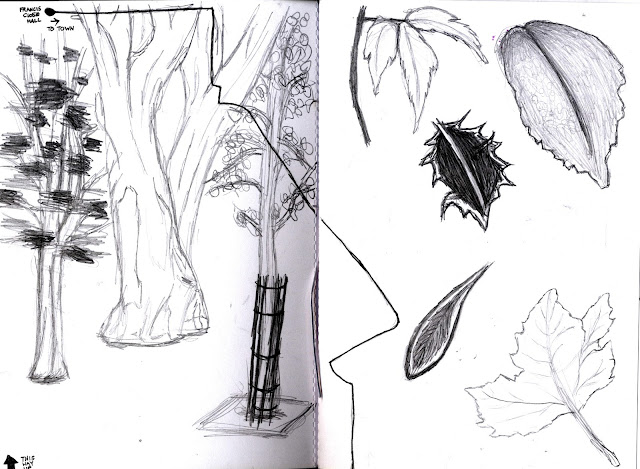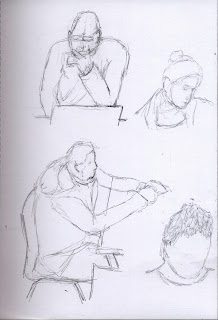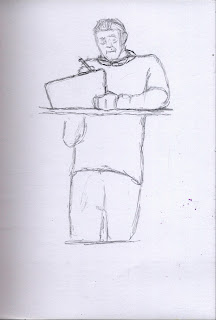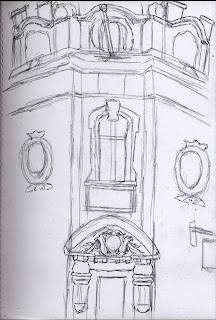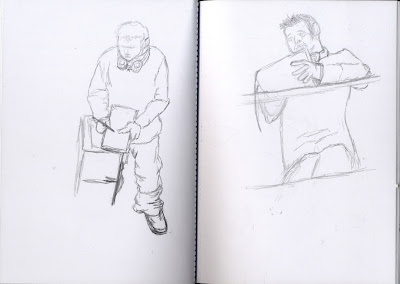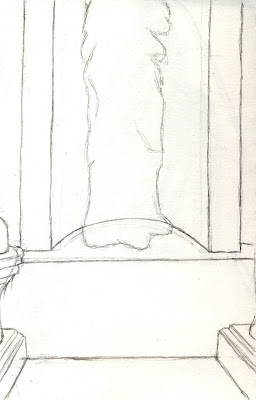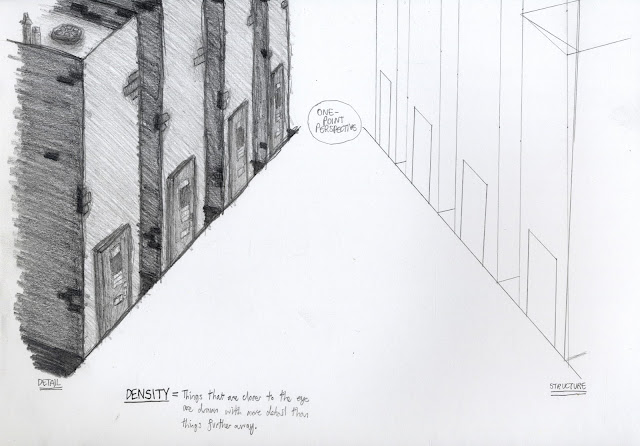This task challenged me to produce a figure sequence (of 3-5 frames), using different viewpoints. The finished sequence shows a cloaked traveller walking through a snowy forest. In this sequence, I incorporated perspective to achieve appropriate depth of field, and managed to use three different viewpoints.
The base version of the sequence was drawn with pencil, prior to thickening the lines with pen. I changed the completely dark sections to a dark blue colour - through the use of an image manipulation program (GIMP). This was done so that I could not have any black sections when adding colour in different mediums.
Next, I worked on a pencil colour version of the sequence. By limiting my colour options to only three colours, I tried to achieve a warmth emanating from the setting sun, throughout the sequence. By contrast, I wanted to make the tree trunks and forest floor feel cold to the viewer. As you can see, the use of the aforementioned dark blue sections works to demonstrate the size and density of the forest.
The following version of this sequence is monochromatic, and gives a completely different atmosphere to the colour version. The ambiguousness of the elements used in the base sequence allowed me to change the time of day, and add long shadows to demonstrate the strength and direction of light. I think the negative space provided by the foliage and snowy ground balances well against my use of heavy black sections in the sequence.








